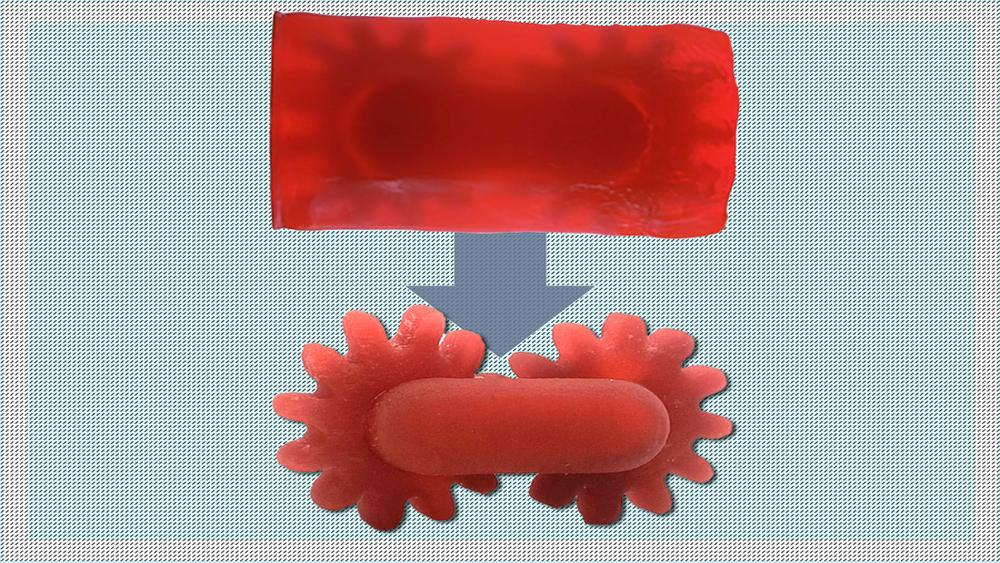Courtesy of the researchers; MIT News
Researchers have developed a resin that turns into two different kinds of solids, depending on the type of light that shines on it: Ultraviolet light cures the resin into a highly resilient solid, while visible light turns the same resin into a solid that is easily dissolvable in certain solvents.
Hearing aids, mouth guards, dental implants, and other highly tailored structures are often products of 3D printing. These structures are typically made via vat photopolymerization—a form of 3D printing that uses patterns of light to shape and solidify a resin, one layer at a time.
|
ADVERTISEMENT |
The process also involves printing structural supports from the same material to hold the product in place as it’s printed. Once a product is fully formed, the supports are removed manually and typically thrown out as unusable waste.
MIT engineers have found a way to bypass this last finishing step in a way that could significantly speed up the 3D-printing process. They developed a resin that turns into two different kinds of solids, depending on the type of light that shines on it: Ultraviolet light cures the resin into a highly resilient solid, while visible light turns the same resin into a solid that easily dissolves in certain solvents.
…

Add new comment